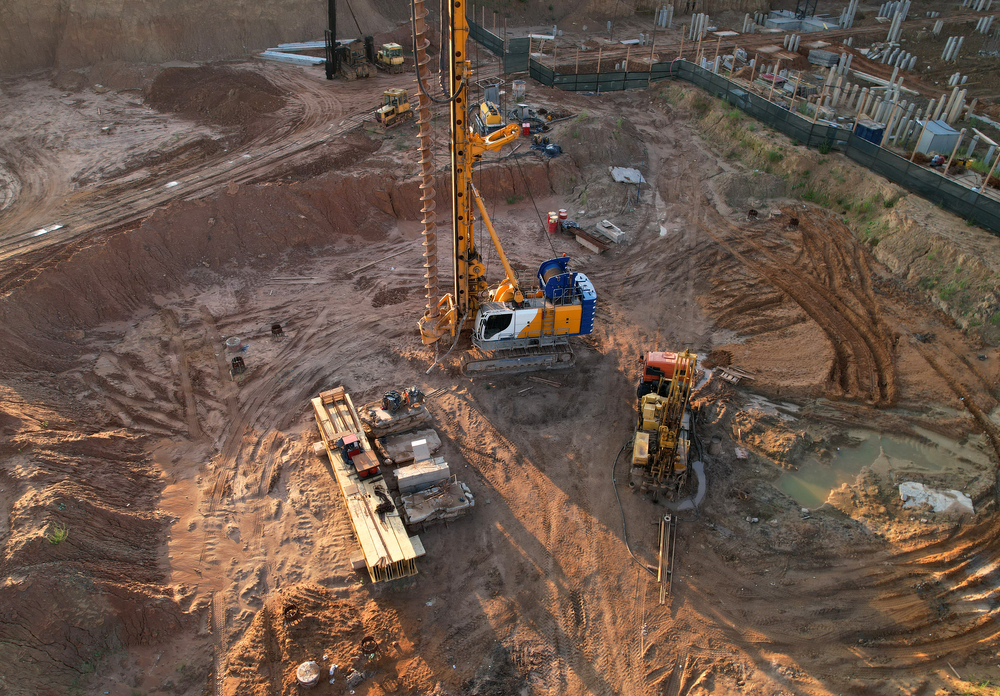The Ultimate Guide To Geotheta
The Ultimate Guide To Geotheta
Blog Article
4 Simple Techniques For Geotheta
Table of ContentsNot known Incorrect Statements About Geotheta Geotheta - QuestionsGeotheta Can Be Fun For EveryoneThe smart Trick of Geotheta That Nobody is DiscussingGet This Report about Geotheta

They perform website investigations, gather examples, execute research laboratory examinations, and analyze data to examine the viability of the ground for construction projects - Tailings Engineer. Based upon their searchings for, geotechnical designers supply referrals for structure layout, incline stability, keeping frameworks, and reduction of geotechnical risks. They team up with other specialists, such as engineers, architectural engineers, and construction groups, to make sure that geotechnical factors to consider are integrated into the general project design and implementation
By evaluating the habits and properties of soil and rock, they can recognize potential geotechnical dangers such as landslides, soil negotiation, or incline instability. Their knowledge assists avoid failures or accidents that could jeopardize lives and residential or commercial property. Here are some comprehensive tasks and obligations of a geotechnical engineer: Site Investigation: Geotechnical designers conduct website examinations to collect information on subsurface conditions.
They interpret the information to comprehend the properties and actions of the dirt and rock, including their stamina, leaks in the structure, compaction characteristics, and groundwater problems. Geotechnical Evaluation and Layout: Geotechnical engineers evaluate the information gathered throughout site examinations to evaluate the stability and viability of the site for building and construction jobs. They do geotechnical calculations and modeling to examine elements such as bearing ability, negotiation, incline security, lateral planet stress, and groundwater circulation.
Get This Report about Geotheta
Structure Design: Geotechnical designers play an important function in designing foundations that can securely sustain the desired framework. They assess the dirt problems and lots requirements to establish the appropriate foundation kind, such as shallow foundations (e.g., grounds), deep structures (e.g (https://triberr.com/geotheta)., stacks), or specialized strategies like soil enhancement. They take into consideration aspects such as settlement restrictions, bearing ability, and soil-structure interaction to create optimal foundation styles
They review construction plans, screen site tasks, and conduct area examinations to verify that the design recommendations are complied with. If unexpected geotechnical issues arise, they assess the situation and give suggestions for removal or adjustments to the layout. Risk Evaluation and Reduction: Geotechnical designers analyze geotechnical dangers and risks linked with the project website, such as landslides, liquefaction, or dirt erosion.

Partnership and Interaction: Geotechnical designers function very closely with various other experts associated with a job, such as designers, structural engineers, and construction teams. Reliable interaction and cooperation are important to incorporate geotechnical factors to consider right into the overall job design and building and construction process. Geotechnical designers offer technological knowledge, answer queries, and make certain that geotechnical needs are fulfilled.
Indicators on Geotheta You Need To Know
Below are some sorts of geotechnical engineers: Structure Designer: Foundation designers specialize in designing and assessing foundations for structures. They analyze the dirt conditions, load demands, and website characteristics to identify the most suitable foundation kind and style, such as superficial structures, deep foundations, or specialized methods like stack foundations.
They review the variables influencing slope stability, such as soil residential properties, groundwater problems, and incline geometry, and establish approaches to avoid incline failures and mitigate dangers. Quake Designer: Earthquake designers focus on assessing and making frameworks to hold up against seismic pressures. They examine helpful hints the seismic danger of a website, examine soil liquefaction potential, and create seismic style requirements to make sure the security and durability of structures throughout quakes.
They carry out field screening, accumulate samples, and assess the accumulated information to characterize the dirt properties, geologic developments, and groundwater problems at a site. Geotechnical Instrumentation Designer: Geotechnical instrumentation engineers concentrate on tracking and determining the behavior of dirt, rock, and structures. They install and keep instrumentation systems that check aspects such as soil negotiation, groundwater levels, slope activities, and architectural displacements to assess efficiency and offer early cautions of prospective concerns.
The Greatest Guide To Geotheta
They perform tests such as triaxial examinations, loan consolidation tests, straight shear examinations, and permeability examinations to collect data for geotechnical analysis and layout. Geosynthetics Engineer: Geosynthetics engineers concentrate on the design and application of geosynthetic materials, such as geotextiles, geogrids, and geomembranes. They make use of these materials to enhance dirt security, reinforce inclines, give water drainage services, and control disintegration.
They often tend to be investigatory people, which suggests they're intellectual, reflective, and inquisitive. They wonder, systematic, reasonable, logical, and sensible. Several of them are also social, suggesting they're kind, charitable, cooperative, client, caring, handy, empathetic, tactful, and friendly. Does this seem like you? Take our complimentary job test to find out if geotechnical engineer is among your leading career matches.
In the workplace setting, geotechnical designers use specialized software devices to do estimations, develop styles, and examine information. They prepare reports, review task requirements, interact with clients and staff member, and coordinate task tasks. The office setting provides a favorable environment for research, analysis, and cooperation with various other professionals associated with the job.
A Biased View of Geotheta
They frequently see job sites to perform site investigations, assess geotechnical problems, and collect data for evaluation. These check outs entail traveling to various areas, in some cases in remote or tough terrains. Geotechnical engineers might perform dirt sampling, conduct tests, and monitor building activities to make certain that the geotechnical elements of the job are being implemented properly.
Geotechnical designers also operate in specialized geotechnical research laboratories. In these facilities, they perform experiments, perform tests on dirt and rock examples, and analyze the engineering residential properties of the products. Geotechnical laboratory engineers work thoroughly in these atmospheres, handling testing devices, running tools, and recording data. They team up with other lab team to guarantee precise and reputable screening results.
Report this page